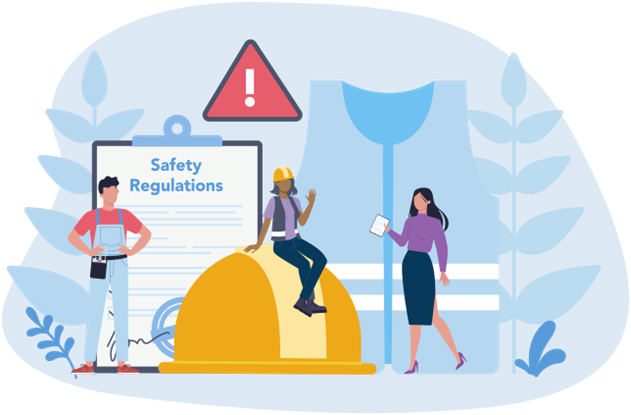Prioritising Workplace Safety: Strategies for Mitigating Health and Safety Risks
Across all industries, workforces and types of commercial organisations, most management teams and professionals will agree that workplace health and safety should be a top priority. According to figures published by the Health and Safety Executive in 2023, fatal workplace injuries rose by 10% in the last year, indicating the continued need for quality safety training.
While the types of risks faced by workers can vary depending on the industry or workplace in question, the guiding principles of effective workplace health and safety initiatives will remain fairly consistent. In short, leaders must commit to the continual analysis of both existing and potential risk factors in order to develop reliable strategies to mitigate accidents and injuries.
With support from smart technologies and data-backed methodologies, modern leaders are more equipped than ever to significantly reduce the occurrence and severity of workplace health and safety threats. To explore this idea further, this post will detail 4 ways to prioritise workplace safety using trusted strategies to mitigate common health and safety risks.
4. Foster a strong workplace safety culture
For any dedicated workplace health and safety policies to be reliably upheld by all members of the workforce, leaders must find a way to foster a culture of safety that permeates through all aspects of the workplace. The foundation of this pursuit will be to provide employees with frequently updated safety policies, equipment, training programs and other similar resources.
Leaders must help staff to understand that workplace health and safety is the responsibility of all employees. This means training must focus on reliable ways to both avoid hazards and report potential risks quickly and effectively. It can help to establish an incentive-based system to support this, with efforts to reward employees who repeatedly set a good example.
2. Develop reliable risk management strategies
Alongside efforts to solidify workplace health and safety initiatives as a joint responsibility for all workers, leaders must implement regimented risk management strategies overseen by a trusted safety officer. A well-implemented risk management strategy will take into account all aspects of a particular workplace, enabling leaders to identify hazards promptly and reliably.
The 5 steps of an effective risk management strategy are as follows -:
Identify hazards – Appoint a safety officer to review the workplace in search of risks, this can include how equipment is used, how dangerous materials are handled, how machinery is used and how workspaces are cleaned and maintained, historic records should also be reviewed to identify any potential hazards that may have been missed
Assess risks – Documented hazards should now be examined closely to determine the level of risk posed by each situation, safety officers should consider how workers may be harmed, whether existing controls are in place, who should be responsible for upholding controls and whether further actions could be taken to improve safety.
Control risks – Consider whether the hazard can be removed entirely or reasonably mitigated via the implementation of new controls, this may include redesigning the process, replacing materials / machinery or providing staff with new safety equipment.
Record findings – Findings must be documented and frequently reviewed to ensure hazard reduction efforts can be continuously improved upon and refined by leaders.
Review policies – As core processes and requirements change, older controls may become ineffective, this means policies must be frequently reviewed and reassessed.
3. Support safety initiatives with smart technologies
Organisational policies and operational strategies can be supported via the deployment of smart security systems and real-time monitoring devices. For example, commercial camera systems can be positioned to continuously monitor high-risk areas, with AI-informed video analytics software configured to warn managers of potential hazards unfolding in real-time.
Such systems can be further improved via integrations with Internet of Things (IoT) sensors and alarms. IoT sound, motion and pressure sensors can be programmed to activate safety devices in direct response to specific stimuli, enabling IoT actuators to immediately adjust active equipment and IoT alarms to sound in real-time to warn staff of unfolding safety risks.
4. Provide continuous employee training
To ensure workplace health and safety initiatives remain a constant focus for all employees, it’s vital that leaders commit to the performance of continuous training programs. Training must be provided at least once per year, though frequent refresher courses offered every 3 – 6 months will help leaders more effectively update safety policies and address new hazards.
Training programs can also provide leaders with regular opportunities to communicate new policies and controls to the workforce, helping to improve health and safety compliance. Staff should also be reminded of where to find updated health and safety information both on the premises and within internal databases to further promote a safety culture in the workplace.
Summary
Most business leaders will agree that workplace health and safety should be considered a top priority. However, ensuring health and safety initiatives are well-implemented and truly effective will require a significant commitment from all management teams and employees.
Leaders should explore trusted strategies such as efforts to create a culture of safety, the development of risk management plans, the implementation of smart technologies and the performance of continuous training to ensure health and safety initiatives become central to daily operations. Commitments in these areas will help to mitigate health and safety risks.



